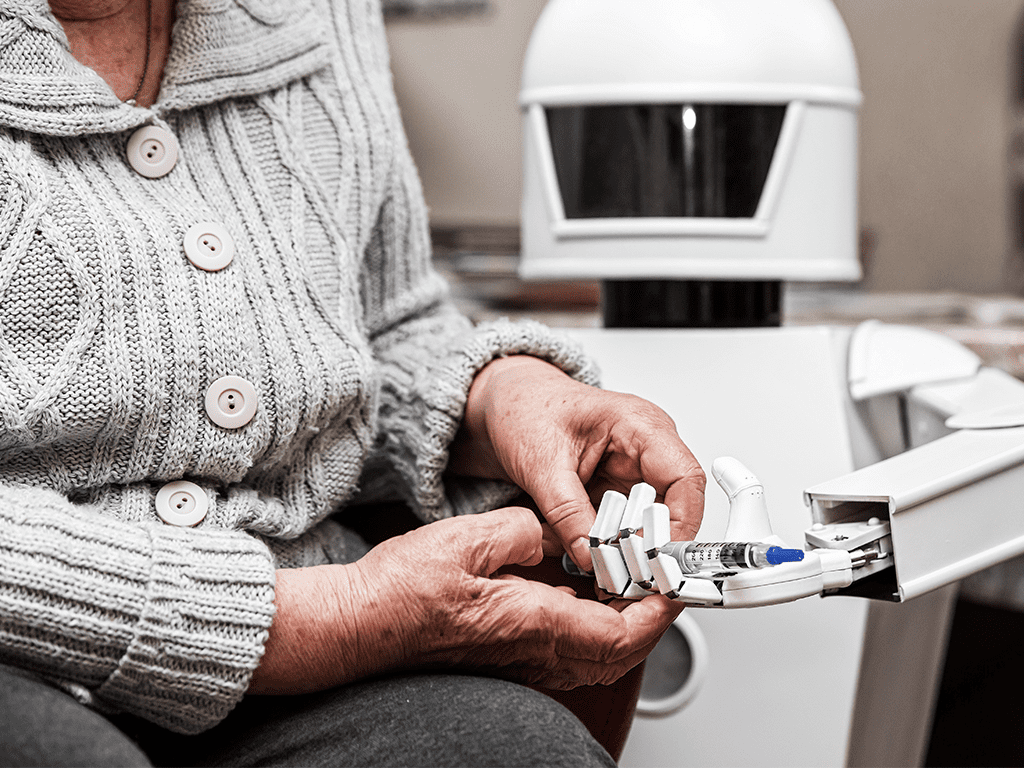
Digital Telework for Remote Physical Work
Remote-operated robots to help protect long-term care home staff and residents.
Project Overview
Updated March 31, 2023.
The Problem
Working remotely has been a key tool in stopping the spread of COVID-19, but currently there is no technology that allows remote workers to perform physical work.
Performing physical work remotely would not only be an economic catalyst during a pandemic, but a critical safety measure for labour-intensive environments like hospitals and long-term care homes. Today, Canadian healthcare workers are three times more likely to contract COVID-19 than the general public. Long-term care facilities have had multiple cluster outbreaks and been a large source of COVID-19 fatalities in Canada.
How We Are Solving It
The Result
This project expanded beyond the existing use of video and audio technologies for the virtual work environment to include remote physical work, demonstrating the use of robots in long-term care and clinic settings using 4G/5G networks and digital medical tools such as digital stethoscopes and biometric monitoring to improve patient care, patient outcomes, and the work environment for healthcare teams. The project successfully established a digital learning environment to support artificial intelligence model development, refined robot piloting capabilities for the healthcare setting, and is currently validating the robot capabilities in a testing environment.
Project Lead
Project Partners
-

"COVID-19 has presented the world with an economic and labour challenge unprecedented in modern times. Partnering with the Digital Technology Supercluster and collaborating with Microsoft, Expeto, the University of British COlumbia and AInBC to build a highly innovative digital approach to job creation is a critical step in supporting Canada's economic recovery from the COVID-19 crisis."
Chief Commercial Officer, Sanctuary AI Read our Impact Story





